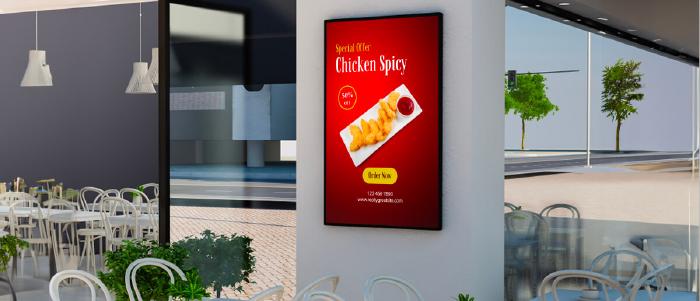
Dec 4 2024
7 min read

If you still believe that having to engage an audience needs a substantial amount of ground-level marketing tactics and other schemes, you, my friend, have been living under the farthest rock humanity can find. Technology has changed the way businesses market themselves. In this digital era, interactive walls have become an innovative way to engage an audiences.
Consider an interactive wall as a canvas and yourself the artist! This canvas responds to touch, movement, or sound, transforming static walls into dynamic experiences — what a wonderful way to collaborate and interact with your target audience.
As you read on, we shall explore how to erect an interactive wall creatively and turning blank spaces into dynamic and immersive experiences. You will also read about how to plan, design, implement, and maintain interactive walls.
Similar to a video wall, an interactive wall is designed to entice and engage an audience. These “walls” are often used in large spaces or venues that can house a large audience, such as museums, public transport, etc. In simple words, Interactive walls are a form of digital signage that combine digital technology with physical surfaces to create immersive experiences. These walls can respond to various inputs such as touch, gestures, or even sound, providing users with a unique and engaging interaction.
Interactive walls offer a plethora of benefits for businesses and organizations looking to enhance their brand presence and engage their audience more effectively. By incorporating interactive elements such as touchscreens, motion sensors, and augmented reality, these walls provide an immersive experience that encourages user participation.
Some key benefits include:
With vibrant colors and engaging content, interactive walls capture the attention of passersby and encourage them to communicate with the content, leading to deeper engagement and memorable experiences.
A well-designed interactive wall serves as a focal point in any space. It attracts attention and sparks conversations about your brand or message.
Interactive walls provide a unique platform for showcasing products, services, or information in a visually compelling and interactive manner. They help set your brand apart from your competitors.

Like any creative project, building an interactive wall requires careful planning. Foremost, you need to define the purpose of your wall. Is the wall for entertainment, education, or something else? Dwell on what kind of audience would you want to interact with your interactive wall. Other factors such as the placement, location of the wall and more will help you tailor the interactive experience to meet specific objectives.
You need to understand how your industry can use an interactive digital wall in order to understand the objective for installing your wall. Lets explore how when and where it can be used:
Interactive education digital signage walls can be used for collaborative learning in schools and universities. These walls can be used to display educational content, information wall, or to support interactive lessons.
In hotels and resorts often need to display information about amenities, local attractions, and events. They can use interactive digital walls to enhance guest experiences. Additionally, guests can check maps, and access personalized recommendations
Interactive digital walls can be used in retail stores to showcase products, offer virtual try-ons, and provide detailed product information, new launches and offers. For example, a fashion retailer can use AR technology to offer virtual fitting rooms. Interactive screens can display customer reviews, product videos, and availability, making it easier for shoppers to make informed decisions.
In corporate settings, interactive digital walls serve as dynamic dashboards which can display various business intelligence tools like Power BI and Grafana. For instance, a company could use these walls to display live dashboards showing key performance metrics, upcoming deadlines, and team achievements. Interactive features could allow employees to submit suggestions, vote on company initiatives, and participate in real-time polls during meetings.
Check out: Enhance office spaces with digital sigange for office lobbies that melds visuals with info.
Interactive digital walls can captivate large audiences at trade shows and exhibitions by showcasing dynamic, real-time content. For instance, a tech company could showcase its latest gadgets through touch-sensitive screens that allow users to explore features, watch video tutorials, and even participate in live Q&A sessions.
Public spaces like stations or airports can use interactive walls to display real-time updates, navigation information, interactive maps and local information.
The key to a successful interactive wall lies in its design.

Creativity is of paramount importance to captivate and engage your audience. Here are some creative design ideas to consider:
A healthy mix of text, images, videos, and animations is necessary to create a multi-sensory experience that resonates with viewers.
Explore the latest interactive technologies such as touchscreens, motion sensors, kiosk digital signage and gesture recognition to add an extra layer of interactivity to your wall.
Customize the content of your interactive wall to the interests and preferences of your target audience with the help of digital signage software. This will ensure that it remains relevant and engaging.
Want to Boost Your Engagement Metrics? Read here.
Interactive walls can serve a variety of purposes, from entertainment to education to enhancing the ambiance of a space. Here are some ideas for interactive walls:
Install touch-sensitive panels that react to touch. Users can interact with the wall by touching different areas to trigger sounds, visuals, or animations.

Incorporate cameras and sensors to detect hand gestures and movements. Users can interact with the wall without physical contact, making it a more hygienic option for public spaces. Although you need to keep the budget in mind, as this option is on the higher side.
Create an AR experience where users can use their smartphones or AR glasses to view additional digital content overlaid onto the physical wall. This could include informational overlays, games, or virtual artwork.
Design interactive walls with educational content, such as historical timelines, maps, or science experiments. Users can interact with the content to learn more about a specific topic in an engaging way.
Looking to drive engagement and deliver personalized experiences through interactive touch screen and touchless displays. Check out: A new-gen interactive kiosk software .
Integrate social media feeds or user-generated content onto a wall display. Users can interact with the Social Wall by posting messages, photos, or videos, creating a dynamic and interactive social hub.
Create interactive walls that encourage physical activity and exercise. Users can play games or follow workout routines displayed on the wall, making fitness more creative , engaging and accessible with gym digital signage walls.
Install interactive walls that raise awareness about environmental issues. Users can interact with simulations or visualizations that illustrate concepts such as climate change, biodiversity, or sustainable practices.
These are just a few ideas to inspire the creation of interactive walls. The possibilities are endless, limited only by creativity and imagination.
To gauge the effectiveness of your interactive wall, it is crucial to track user interactions and analyze feedback and data regularly. Monitor metrics such as engagement rates, dwell time, and user demographics to gain insights into your audience’s behavior and preferences. Use this information to make data-driven decisions and refine your interactive wall over time for optimal performance.
To gauge the effectiveness of your interactive wall, it is crucial to track user interactions and analyze feedback and data regularly. Monitor metrics such as engagement rates, dwell time, and user demographics to gain insights into your audience’s behavior and preferences. Use this information to make data-driven decisions and refine your interactive wall over time for optimal performance.
Like any technology-based installation, an interactive wall requires regular maintenance to ensure optimal performance. Schedule routine inspections to check for any signs of wear or damage. Clean the surface and components regularly to remove dust and debris that may affect functionality.
Keep your interactive wall up to date with the latest software updates and patches. These updates may include bug fixes, performance enhancements, or new features that enhance the user experience. Stay informed about any updates released by the technology providers and implement them promptly.
While erecting an interactive wall can be a rewarding endeavor, it is not without its challenges. Technical glitches, compatibility issues, and budget constraints are common hurdles that may arise during the process. However, with careful planning, collaboration, and problem-solving, these challenges can be overcome to create a successful interactive wall that delights and engages your audience
In conclusion, erecting an interactive wall creatively offers businesses and organizations a powerful tool for engaging their audience and enhancing their brand presence. Embrace a culture of continuous innovation to keep your interactive wall fresh and engaging over time. Stay abreast of emerging technologies, trends, and best practices in interactive design and incorporate them into your installation regularly. Experiment with new ideas, gather feedback, and iterate on your designs to push the boundaries of creativity and engagement.

Dec 4 2024
7 min read

Nov 20 2024
8 min read

Nov 8 2024
6 min read

Oct 18 2024
9 min read
Take complete control of what you show on your digital signage & how you show it.
Start Free Trial Schedule My DemoSee How to Boost Sales & Branding with Digital Signage -40% Less Work, Faster Updates, Better Visibility
Unlock Exclusive Insights